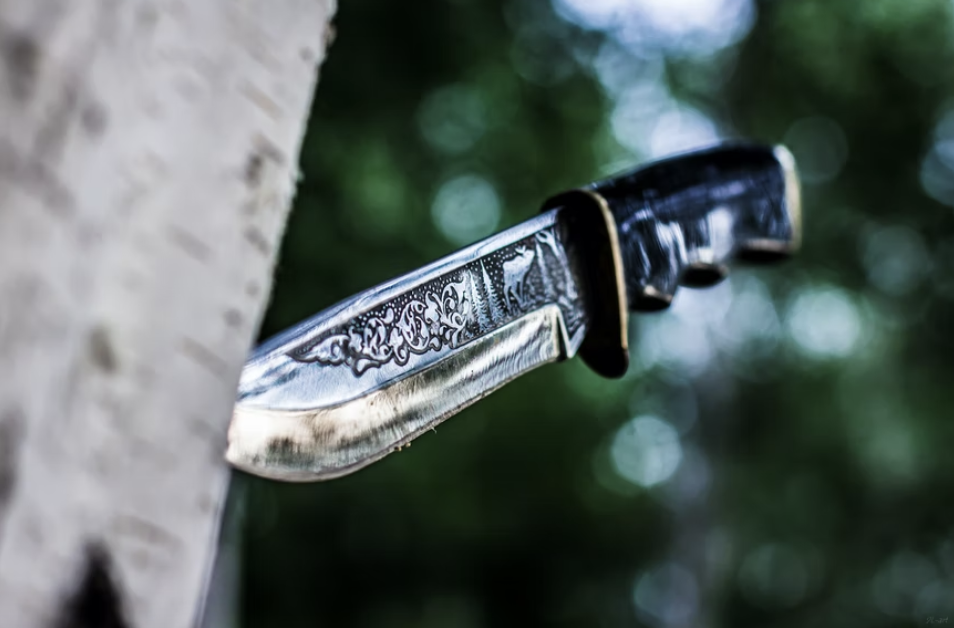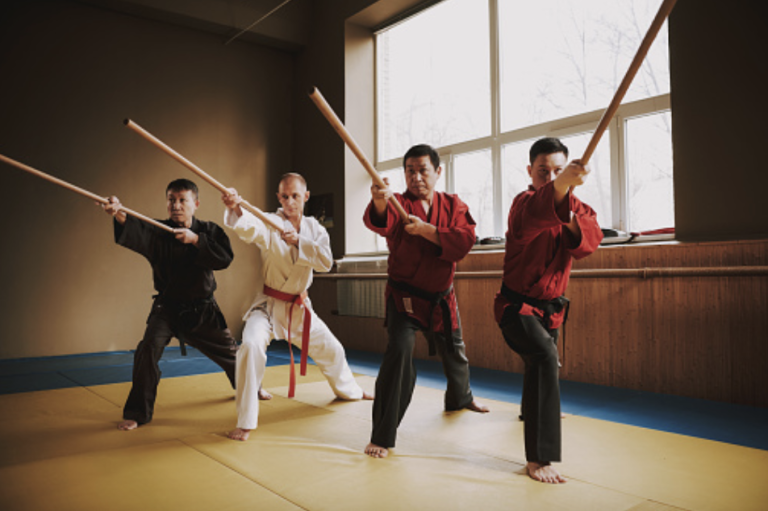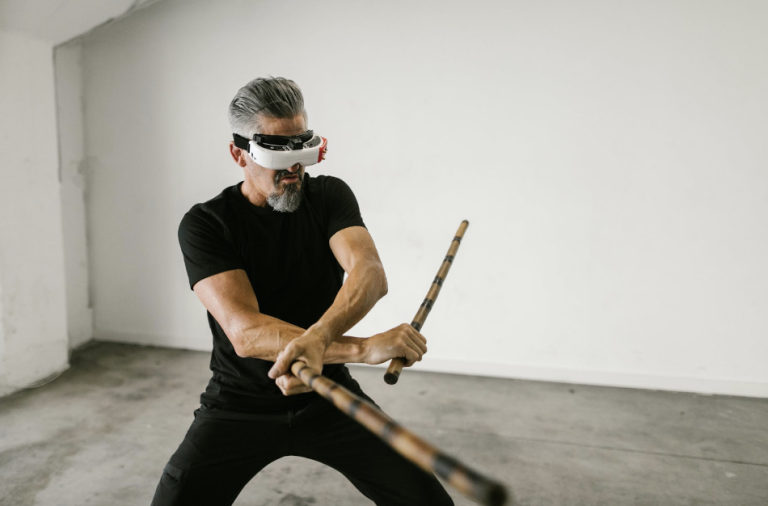12 Common Martial Arts Weapons When Learning Online
Martial arts is typically an unarmed fight using only bare hands and skills. However, for those who prefer to yield a weapon, there are various forms of martial arts that you can practice using anything from sticks, knives, swords, and different types of weapons. Learning weapons online equips you with improved skills in how to carry a weapon in a fight. There are also tournaments and demonstrations you can join to showcase your weapons artistry and expertise.
Using tools and equipment is already vital in martial arts practice. In 2021, the U.S. had a total of $578 million for martial arts equipment wholesale sales. This equipment includes weapons-based martial arts. If you’re interested in training weapons, here are a dozen weapon options you can start to practice.
1. Eskrima
Origin: Philippines
Weapon: Yantok (fighting stick), Bankaw (staff), Baraw (knife), etc.
Otherwise known as Arnis, the Philippines’ national martial arts is among the widely recognized martial arts training with effective weapon use. Eskrima uses various weapons – from a fighting stick to a knife. The movement of the weapon starts with an X shape where the direction of the hands and feet are coordinated. Depending on the weapon employed, Eskrima has various techniques being followed. Some of the techniques can be a single or double stick, knife defense, and the combination of stick/sword and dagger.
2. Kendo
Origin: Japan
Weapon: Bamboo sword
The modern Japanese martial arts Kendo came from Kenjutsu. The basic concept of practicing Kendo is called “Ki-Ken-Tai-Ichi”, which means “Spirit-Sword-body as one”. It is now practiced using a bamboo sword and protective gear. There are two primary techniques in Kendo – the Shikake Waza and Oji Waza. Each one pertains to different striking and attack movements. An effective strike in Kendo is called “Yuko-Datotsu”, one of the necessary elements for a kendoist to strike an opponent.
3. Kumdo
Origin: Korea
Weapon: Mok Geom (wooden sword)
Derived from the Japanese martial arts Kendo, the Kumdo is written as Kǒmdo or Gumdo, which means “the way of the sword”. This sword-fighting martial art from Korea includes sword sheathing, fighting and cutting patterns, and sparring with protective gear. Various primary strikes categorize the practice of Kumdo. These are the overhead strike, underbody strike, overhead slash, side slash, and under slash with either left, right, or straight direction.
4. Sword Fighting
Origin: Europe (HEMA)
Weapon: Longsword
Sword fighting belongs to the category of Historical European Martial Arts, a larger umbrella of martial arts that originated in Europe. It stemmed from the use of swords as a primary weapon of choice during the Late Middle Ages in the continent. Every country in Europe has its variation of sword fighting. Germany, for instance, has the master strikes as part of its fundamental sword fighting techniques. This can be the Zornhau (Strike of Wrath), Krumphau (Crooked Strike), Zwerchau (Cross Strike), and other striking techniques, which are fundamental to the fighting activity.
5. Fencing
Origin: Spain
Weapon: Foil, épée, and sabre
The Spanish term for fencing martial arts is called La Verdadera Destreza or “destreza”, which means dexterity. The practice of fencing started as a form of military training. In modern times, fencing is now included in the Olympics from what initially started as a combat fight weapon in Spain. Each of the weapons serves different purposes. The saber is for offensive tactics, while the epee is primarily for defense. Meanwhile, the foil will combine the function of the two other weapons.
6. Katana
Origin: Japan
Weapon: Katana (Japanese sword)
Katana is a type of Japanese sword with the martial arts practice initially used by the Samurai in feudal Japan. Various modern martial arts use Katana as their weapon. Using the techniques that the Samurais used way back, Katana training is evident in Aikido, Ninjutsu, Kenjutsu, and many other modern Japanese martial arts that employ the use of a Katana sword.
7. Bo Staff
Origin: Japan
Weapon: Bo staff
A Bo staff is usually a long wooden weapon traditionally made from oak. It started as a martial arts practice in Okinawa, Japan. Today, Bo staff is a martial arts practice that other countries practice. One of which is Korea with its term “bong” and labeled as “kon” in China. Various fighting techniques can be done with a Bo staff, including cross strike, down strike, the poke, downward smash, and many other movement patterns.
8. Nunchaku Do
Origin: Japan
Weapon: Nunchucks
This semi-contact martial arts from Japan uses a pair of short wooden sticks connected by a chain, called the Nunchucks. The practice of Nunchucks has been popularized by Bruce Lee, a well-known martial artist. Although some countries and cities have limitations on the use of Nunchucks, it is among the weapons that martial arts practitioners like to train. Its recognizable spinning movement is among the fundamental techniques that Nunchucks owners practice.
9. Gatka
Origin: India
Weapon: Tulwars (swords), Lathi (bamboo rods), chains, etc.
The Sikhs of Punjab in India introduced the Gatka martial arts. It uses a wide variety of weapons, mainly wooden sticks that stimulate the use of a sword. Practicing Gatka involves a stop and attack technique. While there are various weapons in Gatka, the primary weapons are the “Stick” and “Farri”. The pair of equipment becomes an alternative sword and shield weapon for this Indian martial art.
10. Krabi-Krabong
Origin: Thailand
Weapon: Krabi (thin and sharp sword), Krabong (straight staff), Daab (heavier sword), etc.
Combining two weapons, usually a sword and a staff, the Krabi-Krabong is Thailand’s weapon-based martial arts. There are various weapons used in this practice, although the primary use of a curved sword (Krabi in Thai) and a staff (Krabong in Thai) is what constitutes the techniques. Attacking an opponent is done by combining these two weapons. There is also the Daab Song Mue, which is a deadly combination of two swords against an opponent.
11. Mau Rakau
Origin: New Zealand
Weapon: Taiaha (short spear or staff), Mere (bladed weapon), Tewhatewha (ax), etc.
Mau Rakau roughly translates as “to bear a weapon”, which is how this martial art from New Zealand is practiced using several traditional Maori weapons. The weapons used in this Maori martial art have decorations such as carving, feathers, and lashing to help distract an opponent. Practicing Mau Rakau in New Zealand is generally reserved for demonstrations and special occasions.
12. The Kama
Origin: Japan, Malaysia, Philippines
Weapon: Kama (hand scythe weapon)
The Kama uses a pair of bladed weapons, a scythe weapon. It was initially used as a sickle to reap crops and then became a martial arts weapon. There are various ways to attack or block an opponent using the Kama weapon. A common technique is to use the other Kama pair to block an incoming strike while the other Kama does a counterattack.
Why Choose Weapons Training
Weapons-based martial arts add more skills as you will need to wield the material in hand effectively. It inflicts more damage, typically when used in real-life combat. Learning weapons online works well regardless of your goals. Whether your goal is to join tournaments, for self-defense purposes, or simply as a form of workout, weapons add up to your skills. Weapons are another form of learning self-defense online.
Most of the commonly trained weapons in martial arts need specific expertise. This is due mainly to the cultural origins of the weapons-based practice, making it difficult to train with a legitimate instructor who knows the proper way to wield the weapon.
To make it easy to access training, you can choose an online approach. Instead of relying upon videos from, say, YouTube, learning weapons online would serve your training well by choosing experts on any of these weapons. One of the common and efficient methods is by subscribing to instructional videos. These videos provide a proper demonstration in an easy-to-follow format. Best of all, you are learning how to wield the weapon from a skilled expert.



